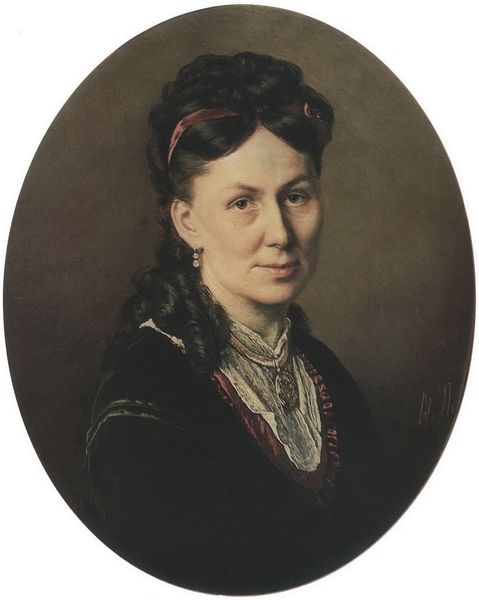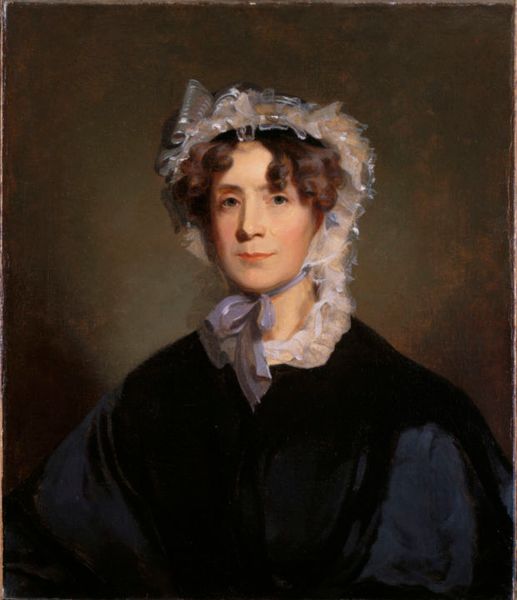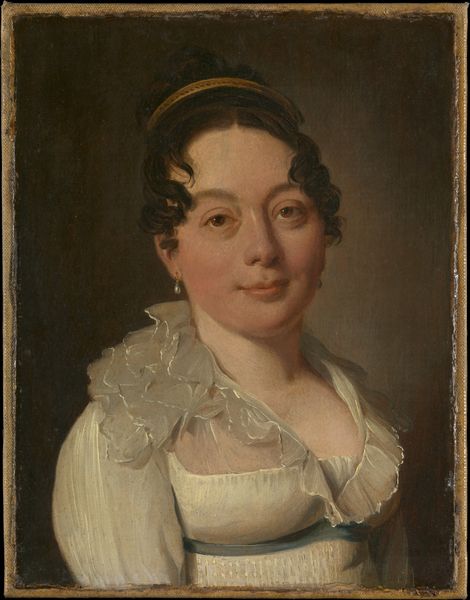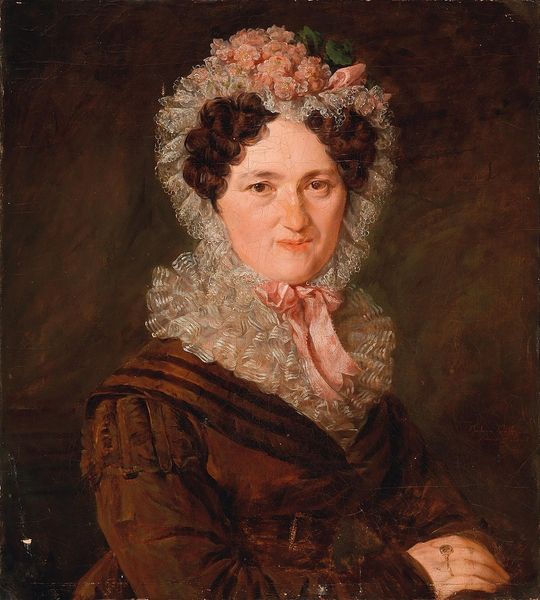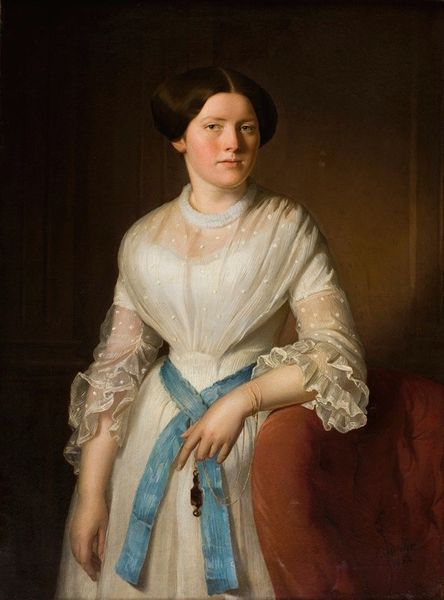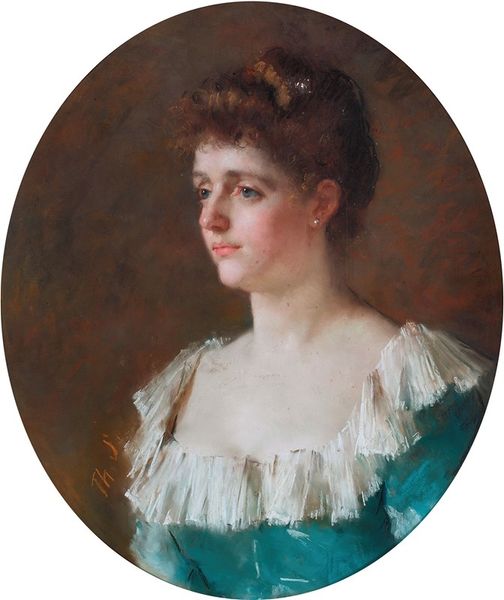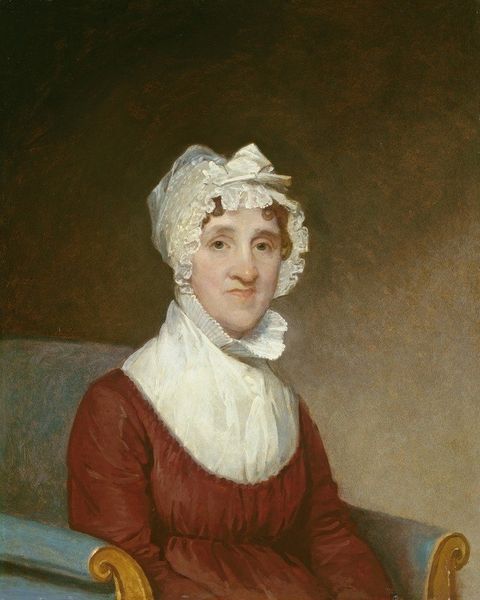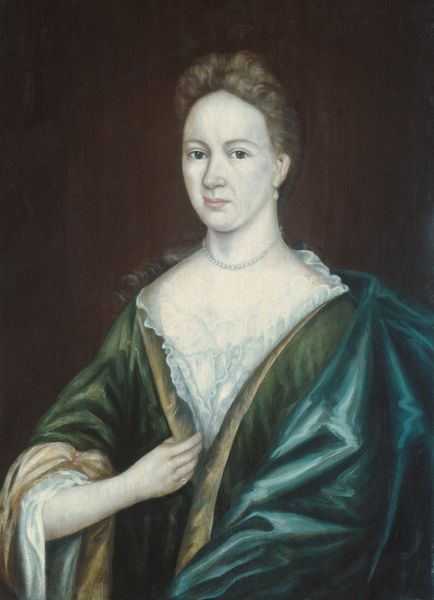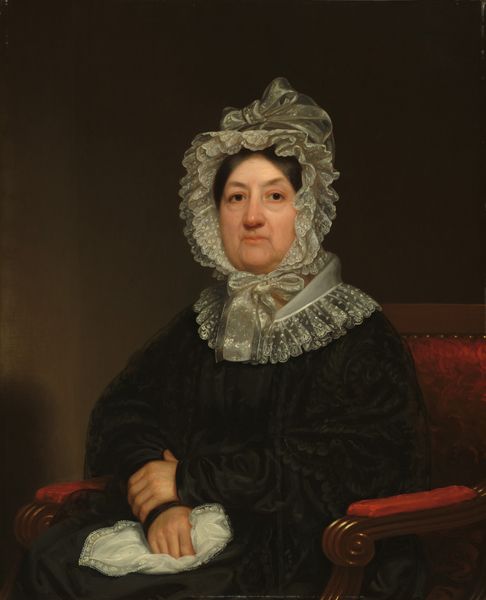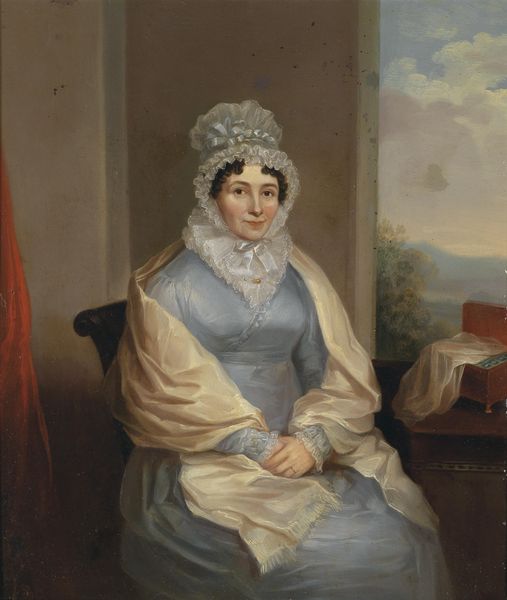
Copyright: Public domain
Curator: Here we have Harriet Backer’s portrait of Karen Nielsen, later known as F. Wedel Jarlsberg, completed in 1876 using oil paint. It offers a striking study in character, doesn't it? Editor: It does indeed. I’m immediately struck by the subdued palette, predominantly blacks and creams. It conveys a certain quiet dignity, but also a feeling of constraint, wouldn't you agree? Curator: Definitely. I find it intriguing how Backer contrasts the fluidity of the oil paint, creating luminous skin tones, with the clearly defined lace collar. There's a tension between meticulous detail and painterly freedom. Think about the material conditions required to achieve that delicate lace – the labour, the time... it speaks of a certain social stratum. Editor: Yes, that exquisite lace frames the face, and you notice those three pink roses carefully pinned – are those symbols of love, perhaps hinting at future romance or a coded message about her status? Flowers in portraits of that era often signified specific virtues or aspirations. Curator: Perhaps. The black fabric also invites speculation. Is it simply a fashionable dress, or does the stark colour suggest something deeper, like mourning or solemnity? Backer’s brushwork gives the heavy material a certain weight; you sense its texture. It speaks to a social reality where appearance was rigorously policed through garments. Editor: Precisely! Black was undeniably linked to mourning but, in this context, doesn't that accentuation by Backer focus our gaze upon her features, lending her countenance even greater power, as if challenging those social restrictions? It is the same somber note that can convey wealth. Her almost melancholic stare makes you wonder what stories that woman carried within. The roses could equally suggest fragile beauty destined to fade under the weight of societal expectations. Curator: Absolutely, and knowing Backer's commitment to capturing authentic representations, it makes one ponder the interplay between subject and artist, as well as how art mediates identity through choices about process. What kind of labour went into this creation? What does oil paint let an artist convey that another medium cannot? Editor: Indeed. It’s more than a portrait; it’s an exploration of personhood expressed through visual codes, reflecting a wider cultural landscape of ideals and repression. Curator: Thank you, that truly enriched my understanding. Seeing this painting through your perspective helps appreciate not only its visual aspects, but the layers of context within each symbol and each painted texture. Editor: It's been a pleasure – bringing attention to those subtle indicators gives us more profound means of looking into our own understanding.
Comments
No comments
Be the first to comment and join the conversation on the ultimate creative platform.

